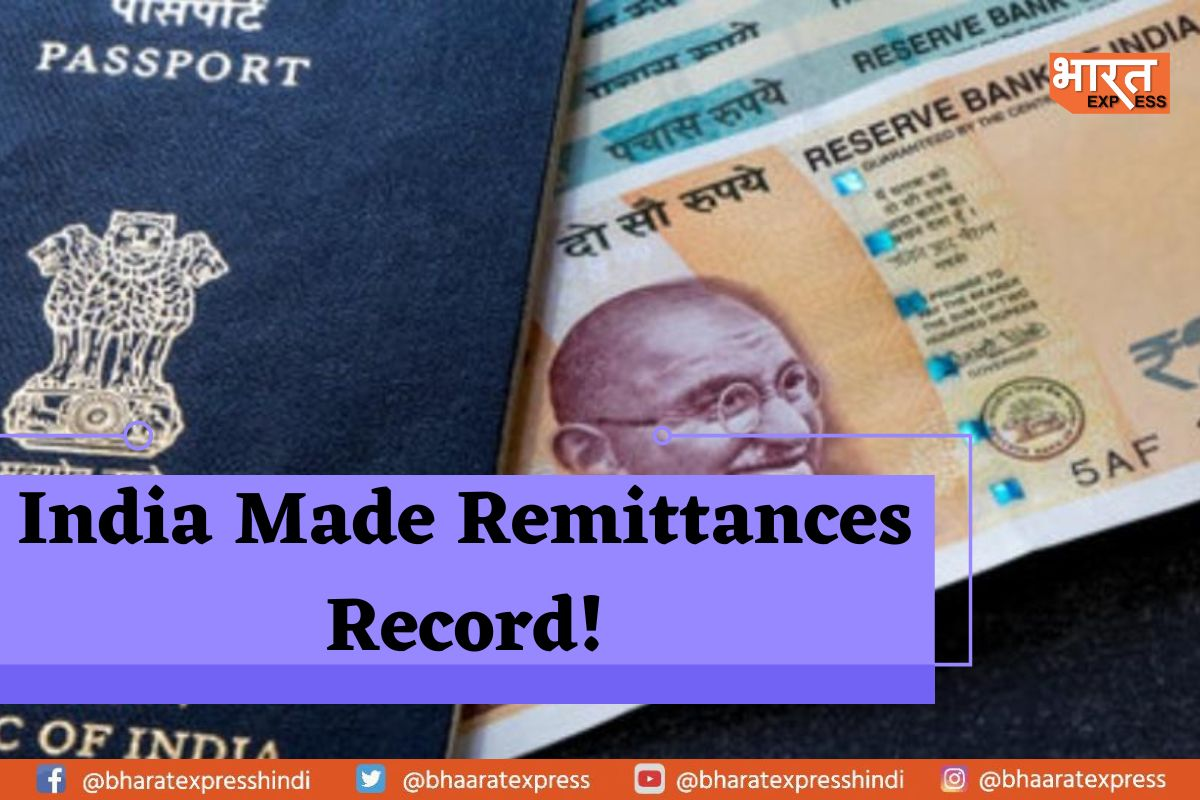
REFERENCE IMAGE
In 2022, India achieved a significant milestone by becoming the first nation in the world to receive annual remittances from overseas surpassing $100 billion. As per the World Bank, private remittances or money transfers from NRIs to their acquaintances in India grew by 12% year-on-year, crossing the aforementioned threshold. It is anticipated that India will continue to maintain its position as the leading remittance recipient in FY23, a title it claimed from China in FY21.
Also Read: Government Increases Procurement of Wheat Under MSP by 13%
The most recent data indicates that the trend of steady and rapid growth in “personal transfers” to India, which was halted during FY21 due to the pandemic, has not only resumed but also strengthened. This rise in remittances comes at a time when foreign direct investment (FDI) flows between countries appear to have slowed. In 2022, multilateral development financing body reported that low- and middle-income nations received roughly $630 billion in remittances, a 5% increase from the previous year. These countries’ remittance inflows were on par with their FDI inflows during the year.
Foreign direct investment (FDI) in India declined by 15% YoY to $36.75 billion between April-December of the current fiscal year, as per data from the department for promotion of industry and internal trade. TerraPay, a mobile payments provider in London, asserts that India is receiving funds through remittances from nations such as Qatar, Saudi Arabia, Australia, and the US. The surge in remittances can be attributed to the fact that India has the largest diaspora globally, with approximately 18 million Indians living abroad, and the resumption of work and travel after vaccination, as well as higher oil prices, which enable overseas workers to send more money to their families.
Also Read: FOREX Reserves Surge to Record Highs, Boosting Economic Outlook
Indian migrants from the US, UK, and Australia, who are highly skilled, are sending more money back home. It is aided by job support programs during Covid-19 restrictions. Additionally, the depreciation of the rupee against the US dollar may have also contributed to the rise in remittances. Private remittances serve as a significant advantage to India’s current account, which often faces a merchandise trade deficit. Furthermore, an increase in service exports has enabled the country to maintain a comfortable balance of payments position in recent quarters.
The current account deficit (CAD) of India decreased to 2.2% of GDP, or $18.2 billion in Q3FY23, as compared to 4.4% in Q2, primarily due to a decline in the goods trade deficit. Analysts estimate that with a reduction in the average trade deficit in Q4FY24 as compared to the previous quarter, the CAD for FY23 would be around $77-80 billion, which is a relatively low level.
To read more such news, download Bharat Express news apps


















